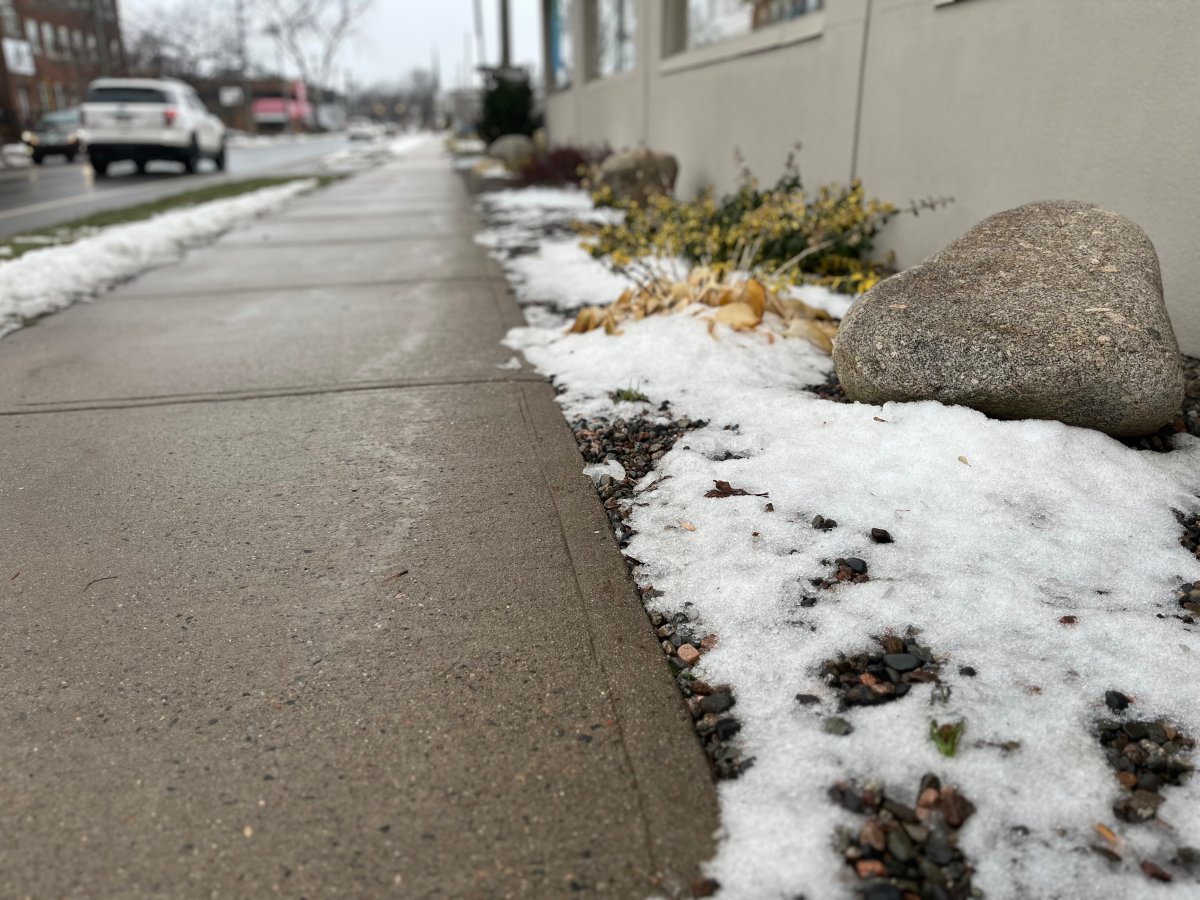Amid heavy debate surrounding sidewalks, city hall has devised a new plan to decide the best way to install them across London, Ont.

Many streets within neighbourhoods and subdivisions built outside the city core were constructed with a car-centred focus.
“Changing neighbourhood design approaches over many decades have created a ring of legacy neighbourhoods with limited sidewalk connections located between the historic core of the city and the newer subdivisions around the perimeter,” read the report from city staff to the civic works committee.
According to the report, “new sidewalks are to be installed as part of road reconstruction and underground infrastructure renewal projects in accordance with London Plan policy that requires sidewalks be included on both sides of most streets when construction occurs.”
However, despite the rapid growth of the city, residents continue to vote against sidewalk additions in spite of council voting to implement some on streets undergoing plumbing replacements.
As a result, hour-long debates have sparked between city councillors, reportedly driving a wedge between those pushing for policies encouraging all forms of active transportation and those against the implementation of sidewalks.
“In keeping with the various policies supporting sidewalk infrastructure, road reconstruction project designs now strive to include sidewalks on both sides of the street unless there are significant constraints, and then, at a sidewalk on at least one side is pursued,” the report stated.
“In recent years, this has led to debate within communities due to a conflict between the goal of providing a safe and accessible mobility network and the desire to avoid neighbourhood impacts to existing trees, parking, and driveways.”

Ward 7 Coun. Corrine Rahman seconded that this is an issue that people are very passionate about.
“I’ve been following along for the last few years around this debate around sidewalks, and I think council’s direction in 2021, after we saw kind of a street-by-street debate regarding exemptions on certain streets, council then directed civic administration to come up with this Neighbourhood Connectivity Plan (NCP),” she said.
In bringing an informed approach to a rising municipal issue, the plan, drafted ahead of construction season, gathers community input while promoting local engagement.
City staff outlined in the report that the NCP supports the 2019-2023 Strategic Plan through the focus area of “building a sustainable city and creating a safe London for women and girls.”
“The report identifies strategies for building new neighbourhood infrastructure to support mobility, safety and more livable, sustainable, vibrant communities,” read the report. “The plan also identifies the implementation and enhancement of road safety measures to deliver convenient and connected mobility choices.”
In its first year, staff said that through various input options, the plan “provided a neutral space for residents to express their opinions on adding new sidewalks in established neighbourhoods, both for and against.”
“This valuable feedback provided a picture of how people move in their community, where they enjoy walking and where there are gaps that make walking uncomfortable.”
So far, connectivity plans have been created in the following three neighbourhoods expected to receive new sidewalks this year:
- Grenfell – located between Fanshawe Park East and Adelaide Street North.
- Whitehills – located between Fanshawe Park Road West and Wonderland Road North.
- Glen Carin – located between Adelaide Street South and Commissioners Road East.
In terms of timing, staff said that if a street is identified as a place where sidewalks should be added, “that work will be timed to coincide with other road work planned for the area or street.”
“For example, if the city is planning to re-pave the road or fix underground infrastructure, staff would try to time those works together to minimize disruption for residents,” the report said. “Regardless, before any sidewalks are installed, residents will hear from the city and have another opportunity to participate in a street level consultation.”
According to the Active Mobility section of the city’s plan, walking can play a positive role in improving mobility and quality of life as part of a balanced system.

Policy 349, which relates specifically to sidewalks, speaks to supporting walkability through the inclusion of sidewalks in street design.
Prior to the plan’s development, Rahman noted that Policy 349 “clearly labels” exemptions. But “sometimes, during discussions, there is an idea that an exemption should happen that has nothing to do with the policy,” resulting in the ongoing debate around their installation.
“I think that the previous council was intending to provide more opportunities for discussion and that’s what the NCP, the Neighbourhood Connectivity Plan, does,” she said. “It provides the opportunity for folks to weigh in and receive more communication from city staff when sidewalks are being discussed in the area so that no neighbourhood or new neighbour feels blindsided by the fact that this is now being discussed and is going to be happening.”
Rahman said that the city is taking the “right approach” in having its first step in tackling this issue being engagement with the community.
“Along with this process, we will seek further public input,” she said. “There will be a public participation meeting (PPM) on January 31. So once the plan is released as to where the sidewalks are being recommended, the community can come to count to committee and provide their feedback.”
Additionally, the city said those who live on the street will also have an opportunity to provide feedback on the proposed sidewalk options in order to “help refine the designs to add the sidewalk in a way that makes the most sense for the street.”
The report added that “to really understand the benefits of a neighbourhood approach to sidewalk discussions, the NCP trial should continue to see the 2022 communities through the public participation meeting process and possibly implementation of an NCP recommended sidewalk through to street-level engagement and construction.”

City staff recommend that the trial for the NCP continue into 2023 to “provide an opportunity to observe the outcome of the first three recommended NCPs and complete a second round of NCP engagement for select neighbourhoods.”
Looking beyond discussions and into the future, Rahman concluded that “ultimately, the goal is to make a more connected community” that’s both walkable and safe.
— with files from Global News’ Devon Peacock.








Comments